Berg “Trident” Mortise Chisels
I’ve seen photos and drawings of these Berg “Trident” mortise chisels for a while and have continued to wonder about their use. Recently, I acquired a #930 model and decided to put together this post.

I dug around and found the 1965 Bahco Catalog #2715. On page H-10 was the information I needed. The chisels were used for recessing locks and hinges. They were both designed to clear out shavings from the recesses. To be honest, I’m still trying to envision how to use these chisels properly.
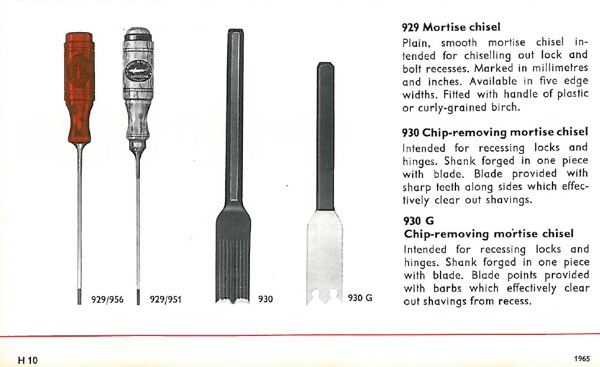
The chisel below is the Berg #930 version. It is all steel and 8″ – 200mm long. The handle looks quite sturdy, but the blade looks rather thin and delicate. It is only 3/32″ – 2mm thick.
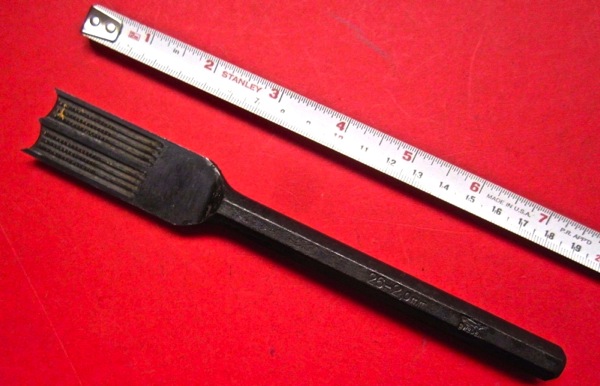
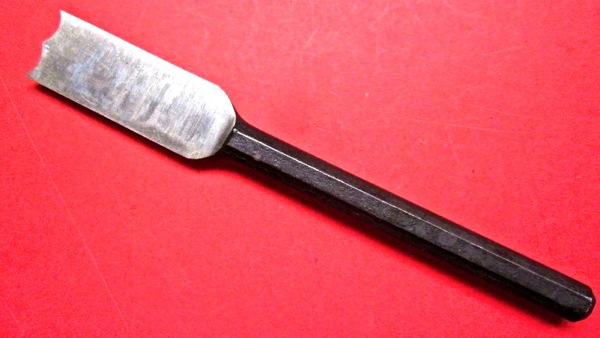
Someone obviously used this chisel You can still see wood fibers embedded on the blade. It looks like the serrated portion of the blade grabs wood chips well.

The #930 model number does not appear on the chisel. However you can see “26 – 2,0mm” stamped there, along with the Berg shark with “SWEDEN” underneath it. The 26 indicates that the blade is 26mm – 1″wide and the 2,0mm indicates that the blade is 2mm – 3/32″ thick.
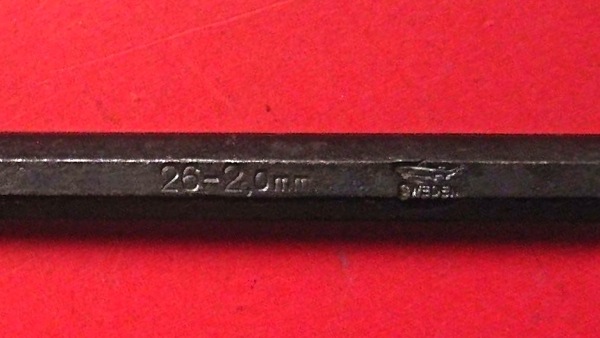
Below is the #930 G version of this Berg Chisel. All of the photos below are courtesy of Randall Nelson, another Swedish chisel fan and frequent contributor to this blog.
The Berg #930 G version is also all steel, but is only 7″ – 175mm long. The blade is the same thickness as the #930 — 3/32″ – 2mm thick.
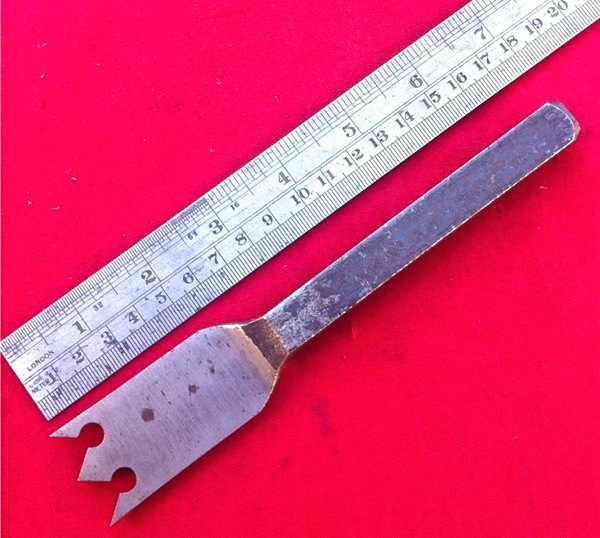
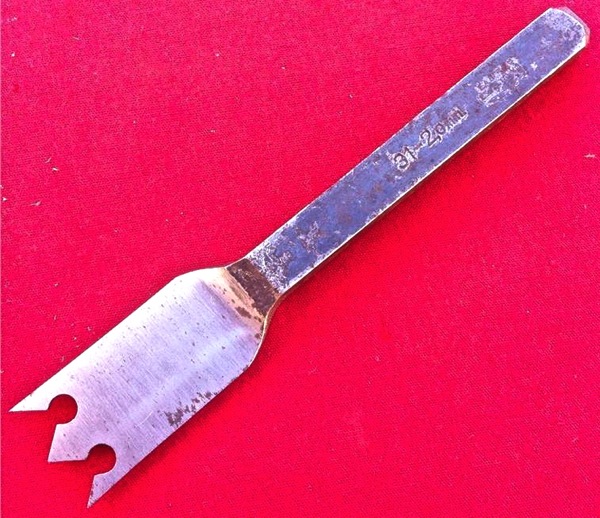
Like the #930, the #930G model number does not appear on the chisel. On this example you can see “31 – 2,0mm” stamped there, along with “E.A. BERG” above the Berg shark. The 31 indicates that the blade is 31mm – 1-1/4″ wide and the 2,0mm indicates that the blade is 2mm – 3/32″ thick.
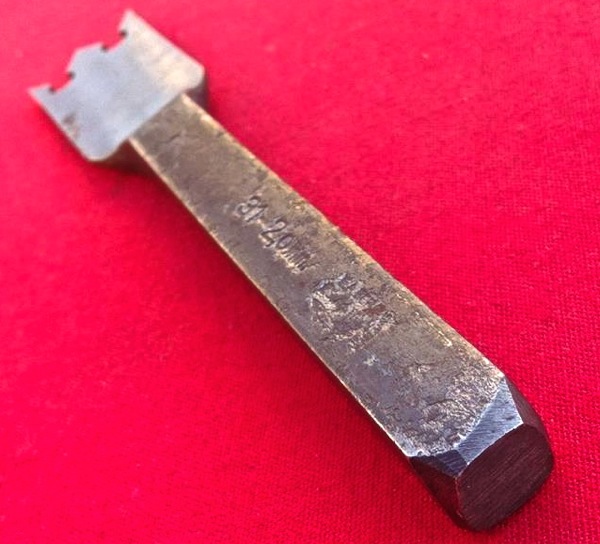
Here’s a closer look at that trident-style blade.
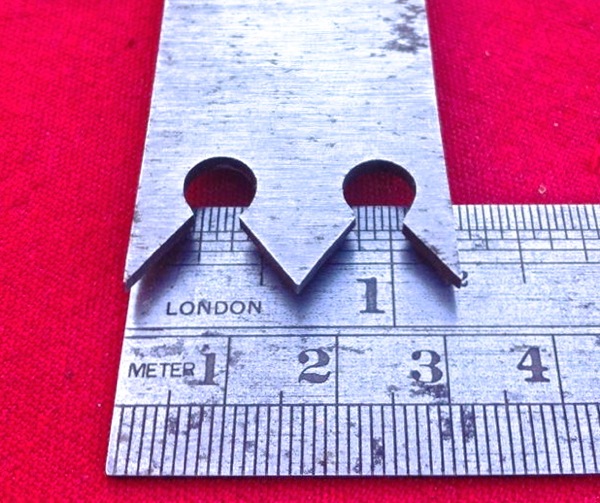
As unusual as this style of chisel seems, it’s possible that they were more widely used and seen in Europe. Randall Nelson sent me this photo of a similar looking tool from Germany. Although it’s not Swedish, it’s interesting enough to be included here.

If anyone has actually used this type of chisel on door locks or hinges, I would love to hear more details on how you used it. You can reach me by emailing me at the address shown in the “Contact” area.
I have used it a lot. It’s for a specific type of hinges with straight hinge blades.
The point of this chisel is to drive it in to the narrow edge of the cabinet door and cabinet base to form a narrow deep mortise into which you slide the hinge blade and than use nails to fasten it from the side.
They are still made today and still used for this purpose by kitchen cabinet makes that make cabinets in the style of the 1950’s Sweden. I can send you some photos or something if you are interested.
Thanks for your comment.
Yes, I would appreciate photos. I will use them and any additional information that you provide to update my post.
Hi. In Sweden I have only seen this tool in old catalogs. Never once in the past four years have I seen one at a flea market or online. Maybe it was not commonly used, or maybe only by professional door guys. There seems to be very few around.
Yes. I think they have always been in limited use and production. I have only come across 1 person who actually uses one when installing doors. That person is “David” who posted above.
Hello! I recently found the exact same German Fitschenbeitel chisel above and have seen a video showing its use! I need to search for it again as it is obscure and hard to find. Could whomever has the photo of the German, wood handled unit, please email me a higher def. copy, as mine is obscured by age and wear. Thanks in advance, Rob
hello I found this video I hope it serves https://www.youtube.com/watch?v=3cQaLbYRjD4
Yes, for ‘fiche’ hinges, as shown in that video. Common i French furniture and woodworking, as well as the German and Scandinavian countries. TanleyandLane.com always seem to have some for sale.